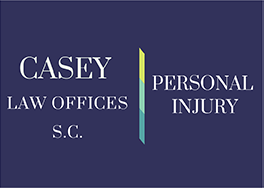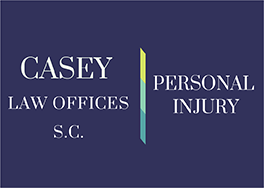Part II.
Holding Big Pharma Accountable for Damage Inflicted on Society’s Most Vulnerable
Tens of thousands of infants born in the U.S. each year are born with Neonatal Abstinence Syndrome (NAS). NAS is a group of conditions caused when a baby withdraws from certain drugs - usually opioids - he or she is exposed to in the womb before birth.
Signs and symptoms of NAS can be different for every baby and include:
- Tremors, seizures, overactive reflexes (twitching) and tight muscle tone
- Fussiness, excessive crying
- Poor feeding or sucking or slow weight gain
- Breathing problems
- Fever, sweating or blotchy skin
- Trouble sleeping
- Diarrhea and vomiting.
Medical professionals can treat many of the immediate symptoms, but long-term effects of NAS include delayed physical, mental and emotional development — setbacks which cause more heartache and financial toll on families.
NAS is becoming increasingly reported at hospitals as the opioid crisis has increased. The Centers for Disease Control and Prevention recently reported that the rate of NAS deliveries at US hospitals quadrupled during the past 15 years.
The physical toll on NAS afflicted infants and the financial toll on the hospitals and insurers (it costs between $159,000-$238,000 on average to treat an infant born with NAS) has resulted in a number of law firms across the country filing individual or class action lawsuits against large pharmaceutical companies. Drug companies who mass-produced and illegally marketed opioids throughout decades, contributing to the nationwide opioid epidemic.
We have written in the past about mass tort lawsuits initiated against Big Pharma. The defendants in those cases have historically been municipalities that have had to cover the costs involved in the crisis. The arguments and theory in the new NAS lawsuits are similar, with one exception - the plaintiffs - those babies exposed to opioids in the womb who display symptoms of withdrawal at birth.
As you would expect, those states that have been hit hardest in the opioid crisis are seeing the largest numbers of NAS related cases. The Federal Centers for Disease Control and Prevention reports that states with the largest percentage of NAS cases include:
West Virginia with 3.34 percent of all hospital births followed by Vermont with 3.33 percent of all births. Right behind them: Tennessee, Alabama, and Kentucky.
The U.S. is not alone.
In Canada, during the past decade, the number of babies exposed to opioids in the womb has increased 16-fold in Ontario. And according to Ontario’s Provincial Council for Maternal and Child Health (PCMCH), more than 950 infants were born to opioid-addicted mothers last year. Just over half of them will live the toughest days of their lives in their first week outside the womb.
There are glimpses of hope for babies with NAS, as this story reports of one child being adopted by a loving family, fully prepared to fight any long-term effects of NAS.
https://www.heraldcourier.com/news/addicted_at_birth/johnson-city-couple-adopted-nas-baby/article_1f58acd9-d8d2-54aa-896d-13874530bb4f.html Unfortunately, many NAS babies won’t be so lucky.
It is appalling that innocent babies are suffering due to Big Pharma dangerous behavior.
Until the governments at the federal, state and local levels can all agree on a viable long-term solution to the opioid crisis and the impact on school-age children, infants born addicted and society as a whole, the opiate drug crisis will linger for generations long into the future.
Please get help if you or someone in your family is suffering from addiction. Your kids need you. Here are three community resources that are there to help you:
First Step: http://firststepcrc.com
Impact Wisconsin: http://www.impactinc.org
Rogers Memorial Hospital: https://rogersbh.org/what-we-treat/addiction
Once you have received help from a medical professional, we encourage you to contact our offices at 414.272.3776 for a free consultation.
Part I of this series explored the impact of opioids in the home on older children. Click here for the article.


